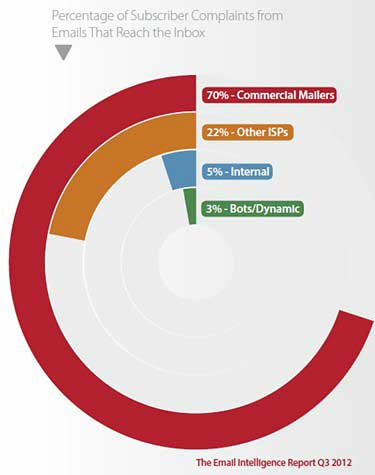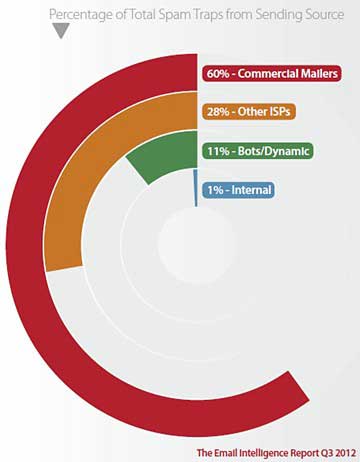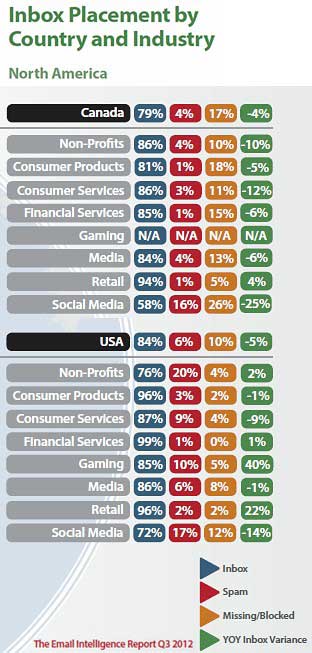Legitimate marketing messages account for an alarming 70% of "this is spam" complaints in consumers' inboxes, underscoring just how important it is for marketers to keep email lists up to date and make use of email marketing best-practices, according to a report by Return Path.
Consumers use "this is spam" to report anything they don't want to receive, even if they initially opted in to receive it (and even if there is an "unsubscribe" link available), Return Path notes.
That makes it tougher for email marketers to maintain high sender reputations and deliverability levels.
ISPs (Internet service providers) and mailbox providers struggle with spam and abuse from their own networks as well as from other ISPs, with internal spam complaints accounting for 5% of all complaints and 22% coming from other ISPs and mailbox providers:

Below, additional findings from Return Path's Email Intelligence Report for the third quarter of 2012.
Spam Traps
As with spam complaints, marketers account for a disproportionate amount of email that is caught in spam traps: 60%. That's much higher than any other source, including botnets, which account for 11% of spam trap hits:

Placement Rates Continue to Decline
Overall, worldwide inbox placement rates are falling:
- In North America, inbox placement rates declined 3% in 3Q12 from the same quarter in 2011, to 82%.
- Europe, which now has the best deliverability rates worldwide, registered a 5% decline in placement rates, to 84% in 3Q12.
- Latin America recorded a drop of 11% in placement rates, to 69% in 2Q12, the largest decline in any region.
Placement Rates in North America, by Industry
Roughly 18% of all commercial email in North America never reached the inbox in 3Q12: 5% landed in spam traps and 13% was blocked or went missing:
- In Canada, the average inbox placement rate was 79%; however, retailers performed far better than the country average, at 94%.
- In the US, the average inbox placement rate was 84%; however, the financial services (99%), consumer services (96%), and retail industries (96%) far outperformed that average.

About the data: Return Path conducted this study by monitoring data from its Email Intelligence Suite for campaigns delivered from July 1 to Sept. 30, 2012. Return Path reviewed data from 241 ISPs in North America, Central and Latin America, Europe, Asia, Australia, and the Asia-Pacific territories.



